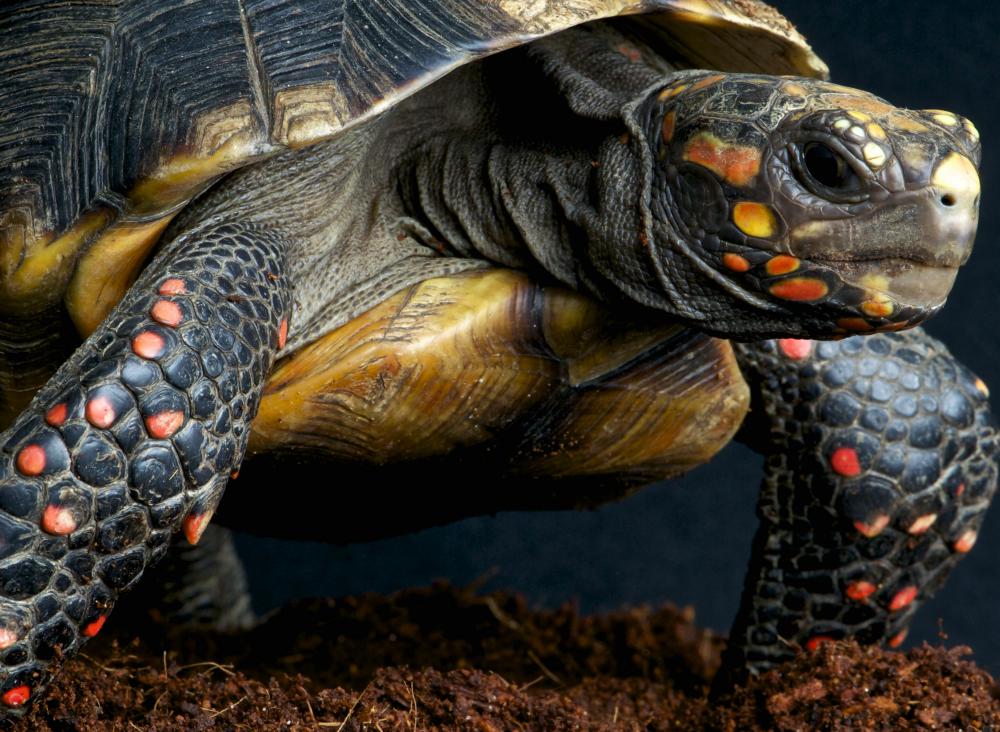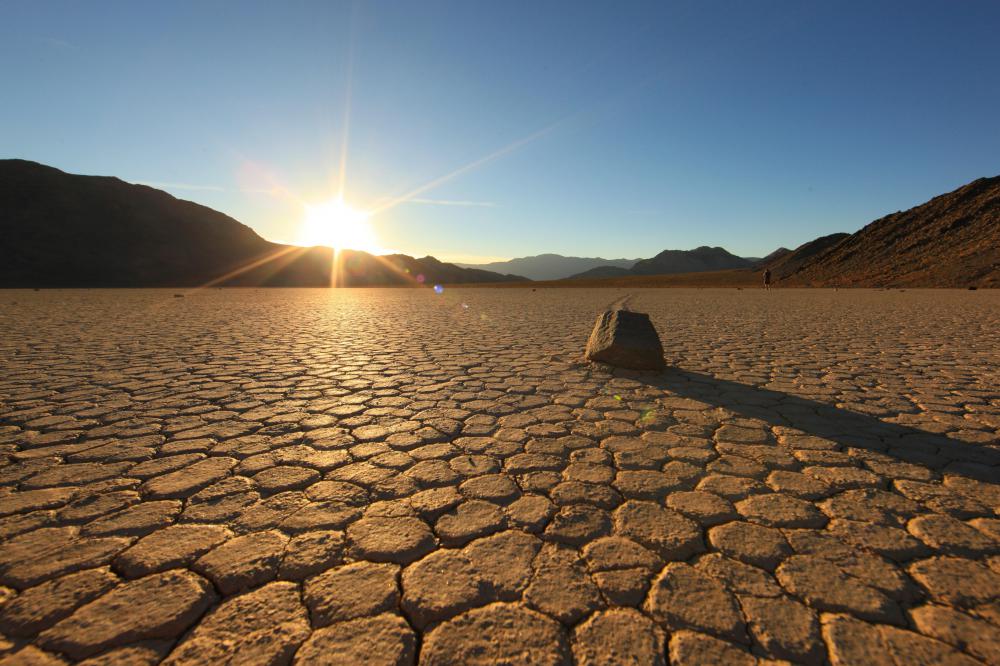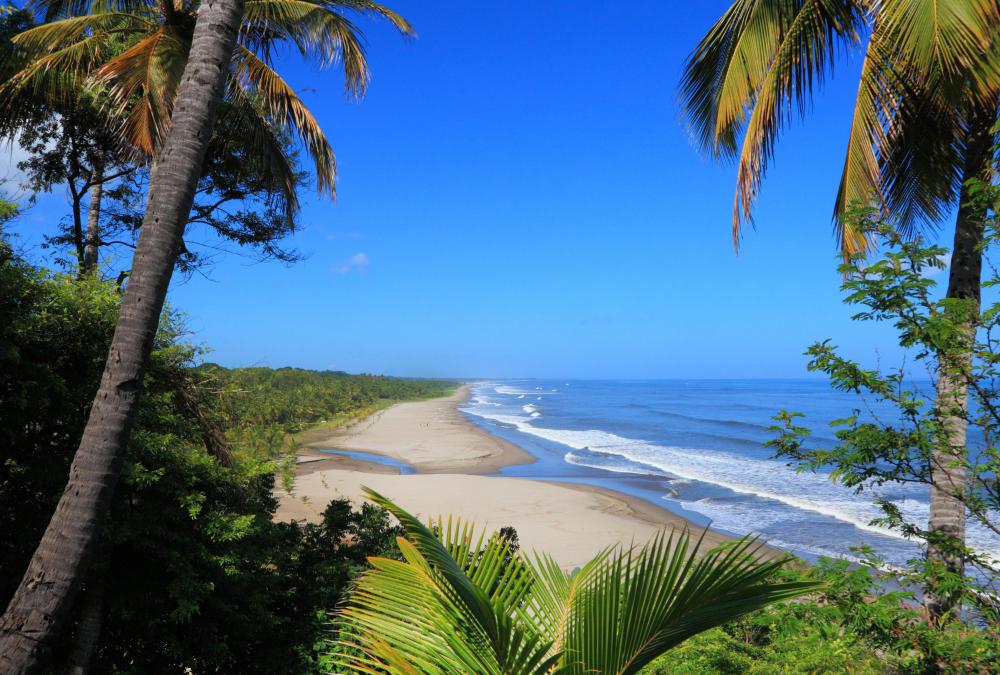At AllThingsNature, we're committed to delivering accurate, trustworthy information. Our expert-authored content is rigorously fact-checked and sourced from credible authorities. Discover how we uphold the highest standards in providing you with reliable knowledge.
What Is in a Tortoise Habitat?
A tortoise habitat is usually a dry region of land such as a grassland, savannah, or desert, since they are largely land-based animals, unlike turtles, their close cousins, that have webbed front feet and prefer aquatic homes. Tortoises are spread all over the globe, with some marine species existing entirely within the confines of the ocean, so a tortoise habitat can vary a great deal depending on the particular species of animal. If a European or African savannah tortoise habitat is being created to keep an animal as a pet, the environment should contain a high fiber mix of plants on which they naturally live, such as clover, dandelions, and types of wild grasses and grains.
One of the key elements of any tortoise environment is the ambient temperature, because they are cold-blooded creatures. Since they cannot regulate their internal body temperature, a tortoise habitat has to be neither freezing nor overly hot, especially if their drinking water supply is limited. Optimally, they require a temperature range of between 71° to 86° Fahrenheit (22° to 30° Celsius). Tortoise species can also be prone to respiratory ailments, so any tortoise habitat must have a humidity level that is natural for the species. This requires that tortoise habitats be open to air flow, unlike housings for snakes or lizards that can be enclosed.

The main elements of a common tortoise habitat are a continual water supply, good air flow, and access to heat from lights or the sun focused on one region of a habitat and from a point above them. Heating from ground level can cause harm to their lower shell, and artificial lighting must provide ultraviolet B rays (UVB) so that the calcium in their diet can be broken down to build up their shells. Species from grassland or dry regions will require a low humidity in the air, and those from tropical climates will need high humidity levels. Humidity can be increased for tropical species by adding damp peat moss or bark to an enclosure that gradually evaporates moisture into the air during the day.

Determining other characteristics of a tortoise habitat is dependent on the species. While turtles will live on insects and plants, tortoises are herbivores, subsisting entirely on plants. Turtles also are natural swimmers, but most species of tortoise are not and can easily drown. A tortoise habitat should, therefore, not generally have deep water unless the tortoise is a tropical species. Another difference between the two related animals is that turtles will tend to migrate, where a tortoise is happy staying in one thoroughly explored area if it is large enough.

Many types of tortoise exist in the wild, from the desert Russian and Leopard tortoises to the African Spurred tortoise and the Red-Eared Slider. The habitat for desert species is arid, often including sandy beaches or flats, canyons, and rocky foothills. African tortoises are more heat and drought tolerant, while the Russian tortoise is better able to endure freezing cold through burrowing and hibernation. The Red-Eared Slider is found in temperate climates in the US where they exist in remote regions of lakes and rivers thick with vegetation. The desert tortoise is also found throughout hot regions of North America, such as the Mojave and Sonoran deserts in the US states of Utah, Nevada, and California, as well as in Mexico where it lives for up to 95% of its life underground.

Other types of tortoise habitat reflect the environment for which the nation is known, such as the Egyptian tortoise which is a desert species, but also lives in marshy areas along the banks of the Nile river. Asian tortoises, such as the Sri Lankan and Burmese varieties, are related to the Leopard tortoise of Africa, and enjoy humid climates and the occasional misting to keep them hydrated. A marine turtle or tortoise habitat, by contrast, can be anything from a temperate to tropical sea region, though they often prefer shallow coastal waters and will come ashore to mate and lay eggs in regions such as Costa Rica and Australia. Marine species of turtle and tortoise are among the oldest surviving species on Earth, with a lineage that can be traced back over 110,000,000 years.
Frequently Asked Questions
What are the essential components of a tortoise habitat?
A tortoise habitat must replicate their natural environment, which includes a spacious area to roam, a variety of safe plants for grazing, a basking spot with appropriate heat and UVB lighting, shelters for hiding, and a shallow water dish for hydration and bathing. Temperature gradients are crucial for thermoregulation, and the substrate should allow for natural behaviors like digging.
How do you maintain the correct temperature and humidity in a tortoise habitat?
Maintaining the correct temperature and humidity involves using thermostats with heat lamps or ceramic heaters to create a basking area between 90-100°F, while the cooler end should be around 70-80°F. Humidity levels should mimic their natural habitat, often between 40-60%, which can be monitored with a hygrometer and maintained with regular misting or a humidifier.
What kind of plants can you include in a tortoise habitat?
Safe plants for a tortoise habitat include grasses, dandelions, clover, and edible flowers like hibiscus and nasturtium. Tortoises enjoy grazing, so non-toxic, pesticide-free plants are essential. According to the Tortoise Table database, avoid plants high in oxalates or goitrogens, which can cause health issues over time.
How much space does a tortoise need in captivity?
The space required for a tortoise depends on its species and size. Generally, the enclosure should be at least 10 times the length of the tortoise's shell in floor space, allowing ample room for exercise and exploration. Outdoor enclosures are preferred when climate permits, as they provide more natural and enriching environments.
What type of substrate is best for a tortoise habitat?
The best substrate for a tortoise habitat is one that mimics their natural environment and allows for digging, such as a mix of topsoil and sand. It should be deep enough to enable burrowing behaviors and free of small particles that could be ingested, leading to impaction. The substrate should also help maintain appropriate humidity levels.
How often should a tortoise habitat be cleaned?
A tortoise habitat should be spot-cleaned daily to remove waste and uneaten food, which helps prevent the growth of bacteria and mold. A more thorough cleaning, including changing the substrate and disinfecting the enclosure, should be done monthly or as needed. Regular cleaning ensures the health and well-being of the tortoise.
AS FEATURED ON:
AS FEATURED ON:














Discuss this Article
Post your comments